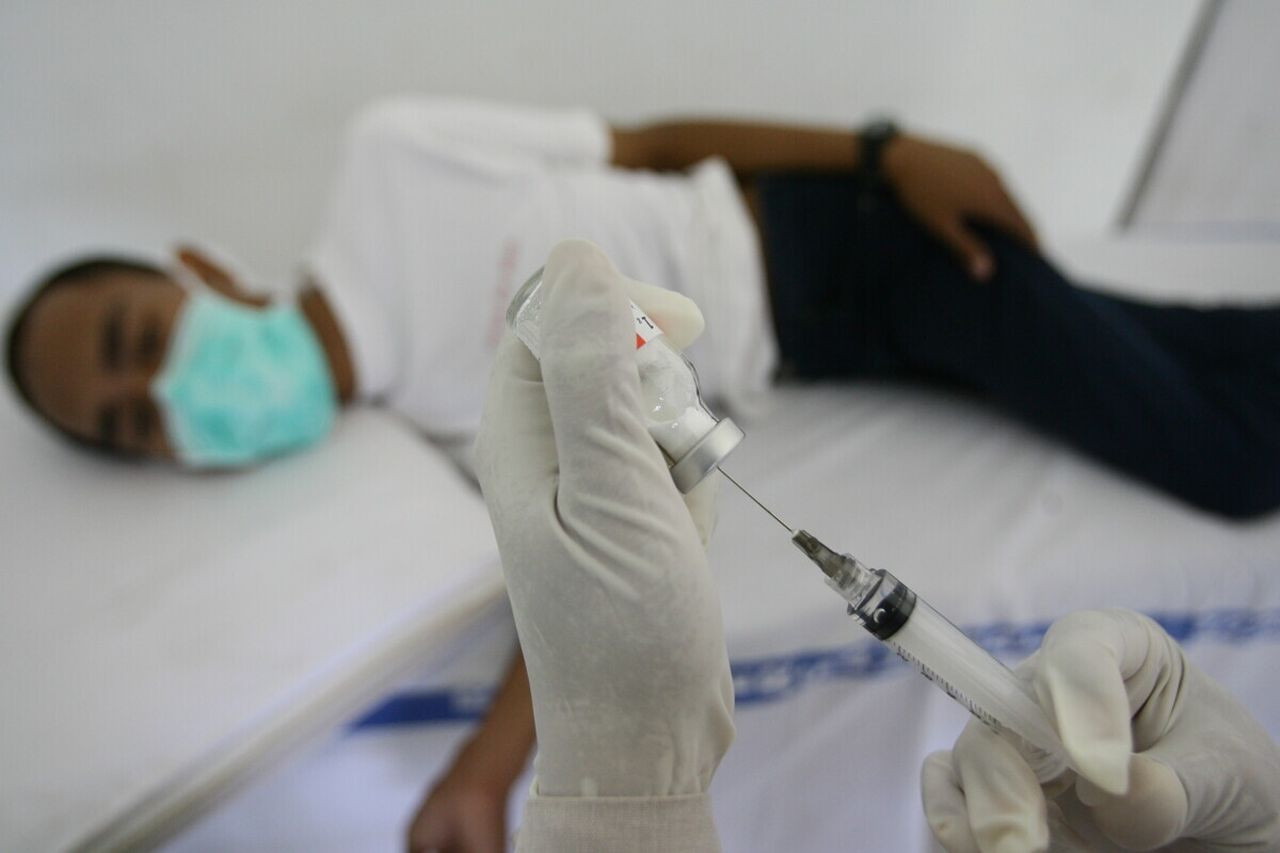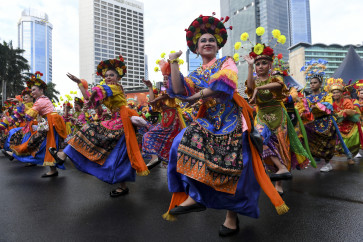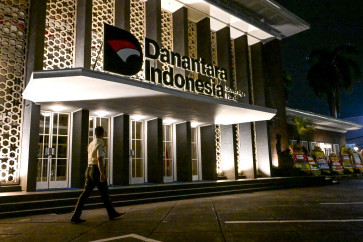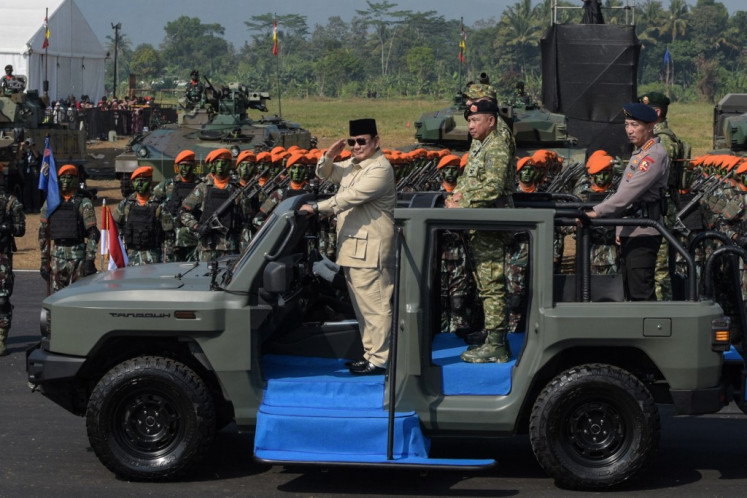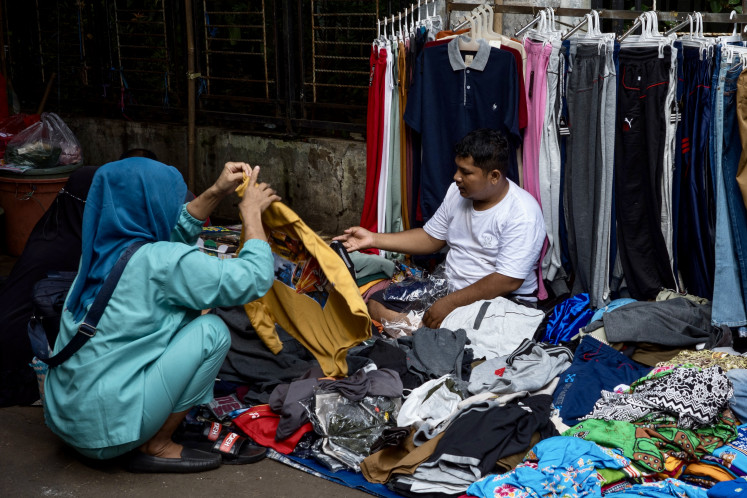Popular Reads
Top Results
Can't find what you're looking for?
View all search resultsPopular Reads
Top Results
Can't find what you're looking for?
View all search resultsThe long road to end tuberculosis
"We have had tools to diagnose TB for 125 years; and we have had drugs to treat TB for 70 years. Why is it still hard to eliminate this deadly disease?”
Change text size
Gift Premium Articles
to Anyone
E
vidence of bone tuberculosis (TB) dates as far back as 8,000 BC and was also found in spinal cord fragments of Egyptian mummies dated 2,400 BC.
In Indonesia, the disease has been detected since the eight century, according to Health Ministry’s data.
Guy Marks, Executive Director of International Union Against Tuberculosis and Lung Diseases (The Union), the cause of TB-Mycobacterium Tuberculosis (Mtb) was only known in 1882.
That year, the British scientist and Nobel Prize Laureate Robert Koch developed a special staining technique to visualize Mtb and described the transmission of TB through droplets released with sneezing and coughing.
“We have known the cause of TB for 141 years; we have had tools to diagnose TB for 125 years; and we have had drugs to treat TB for 70 years. Why is it still hard to eliminate this deadly disease?” Marks said in a recent webinar.
The world has been impatiently waiting for good news as 16 TB vaccine candidates are currently under development.
Until today, the Bacille Chalmette-Guérin (BCG), found since 1921, is the only available TB vaccine worldwide. But, it does not offer adequate protection.
In 2021, the Global Fund recorded that the majority of the 10.6 million people who fell ill and the million people who died from this disease that year had received the BCG vaccine.
In the same year, Indonesia contributed around 9 percent of the total 10.6 million new TB cases worldwide with TB incidence of over 969,000 people and lost more than 150,000 people annually because of this actually preventable and curable disease.
“Every one who develops TB has been infected by someone with infectious [pulmonary] TB in their households, workplace, facilities or communities,” Marks said.
In high burden countries like India and Indonesia, most people who develop TB have been reinfected two years after.
Finding and treating people with infectious TB were the key to prevent others from being infected and developing disease, he insisted.
“We can end TB by breaking the chains of transmission. This is how TB was ended in many countries between the 1950s and 1970s,” he said. But, this system was deemed “not affordable” in developing countries.
Multi-dimensional factors
Maxi Rein Rondonuwu, Health Ministry’s director general for disease control and prevention said that TB elimination has always been a priority health issue to tackle
“However, challenges still arise from the uneven distribution of healthcare services of over 270 million people; cultural and traditional barriers, vast geographical condition, and more importantly the country’s decentralized governance structure,” explained
“The causes of the high prevalence of TB in Indonesia are multi-dimensional and wide ranging,” he added.
While TB can affect anyone regardless of their social status, the majority of people with TB are those coming from low income families living in poor and heavily-dense neighborhoods, lacking in basic services including safe running water and better housing facilities.
According to the ministry, three major drivers of TB in Indonesia are undernourishment, smoking and diabetes, followed by HIV and alcohol.
Poverty and food insecurity remain daunting challenges in Indonesia. Lack of nutritious food is a great contributor to the spread of TB in the country.
In 2021, President Joko “Jokowi” Widodo issued a presidential decree on the establishment of a multi-sectoral coordinating team for the acceleration of TB Control (TP2TB).
The team consists of 17 ministries including the Health Ministry; Finance Ministry; Home Affairs Ministry, Village, Development of Disadvantaged Regions and Transmigration Ministry; Public Works and Housing Ministry and other government institutions at national, provincial and district levels.
Under the presidential decree, the governors and mayors will have to prioritize and take the lead on TB elimination in their jurisdictions
“The government views TB elimination an important part for the development of a highly productive workforce by 2045, and therefore TB must not be viewed as just a health matter, but integral to rural and urban development,” Jokowi said upon issuing the decree.
In addition to its significant impact on health and human capital, the economic burden of TB in Indonesia is substantial.
It is estimated that the overall annual cost of TB in Indonesia to be US$6.9 billion annually, including the loss of productivity and premature death, according to the World Bank’s study in 2021.
Losing tracks
The country’s effort to improve its response against TB has been hampered by the COVID-19 pandemic. Indonesia’s health system was overburdened by the pandemic, creating huge challenges in finding and treating TB cases.
“The pandemic has halted the progress made over the past years by overburdening health systems and diverting attention and funding for TB treatment and elimination,“ said Erlina Burhan, a pulmonologist and also co-founder of Indonesian Coalition of Professional Organization for TB Elimination (KOPI TB).
Health Ministry data said the number of TB case notifications dropped by 43 percent from 467,000 in 2019 to 267,000 in 2020.
There were also an increasing number of “lost-to follow-up patients,” or people with TB who have stopped treatment are no longer in contact with the hospital.
“All components in the society were working together to contain the pandemic. The strict health protocols to protect people from COVID-19 such as testing, tracing, social distancing and treating were actually parallel with our efforts to fight against TB,” Erlina said.
“The difference between COVID and TB responses was the stronger political commitment from the government, flows of funding to acquire vaccines, medical and laboratory equipment as well as community participation to stop the pandemic,” she explained.
“As WHO already declared COVID-19 no longer a global public health emergency, let’s refocus on eliminating TB in Indonesia by using similar health protocols.
“Adequate funding and more importantly commitments from the government and all stakeholders are keys to achieve our national TB goals to end TB by 2030.
---
The writer is founding board member of Asia Pacific Media Alliance (APCAT) for Health and Development

